The straight razor and safety razor are classic shaving tools that have served men for generations.
While they have since taken a back seat to modern cartridge razors and electric shavers, they still have a place in the wide world of men’s grooming.
Today, we wanted to provide you with a detailed look at both of these shaving tools along with their key similarities and differences.
Straight Razor Overview
The first iteration of the straight razor can be traced to the Ancient Egyptians in the 4th millennium BC. These straight razors used gold and copper for the cutting blade. The version that we are familiar with today, one with a stainless steel edge, wasn’t invented until 1680 in Sheffield, England (source).
Modern straight razors will feature either a solid cutting blade or an injectable cutting blade (shavette). There are notable differences between these straight razor types as we will discuss later on. Lastly, the straight razor is often referred to as the cutthroat razor.
Safety Razor Overview
Double edge safety razors are relatively modern and were introduced in the early 1900s. Their adoption became widespread as this shaving tool was part of the standard field kit that was issued to men during World War I (source).
Safety razors get their name due to the addition of the safety bar that extends the length of the cutting blade. It was an evolution of the straight razor and made the shaving process significantly safer and more efficient.
Key Differences Between Straight Razors vs. Safety Razors
Here are the notable differences between straight razors, shavettes, and safety razors:
| Summary | Straight Razor | Shavette | Safety Razor |
|---|---|---|---|
| Initial Investment | High | Low | Low to Medium |
| Maintenance Costs | High | None | None |
| Learning Curve | High | High | Medium |
| Versatility | Low | Low | Low to Medium |
| Clogging | None | None | Low |
| Time Required for Shaving | High | High | Low |
| TSA Friendly? | No | Handle Only | Handle Only |
Design
First, let’s look at the overall design of these razors.
Straight Razor
While it may appear simple, the straight razor contains many different parts. Here’s a diagram of the straight razor (shavette variety) and its components:
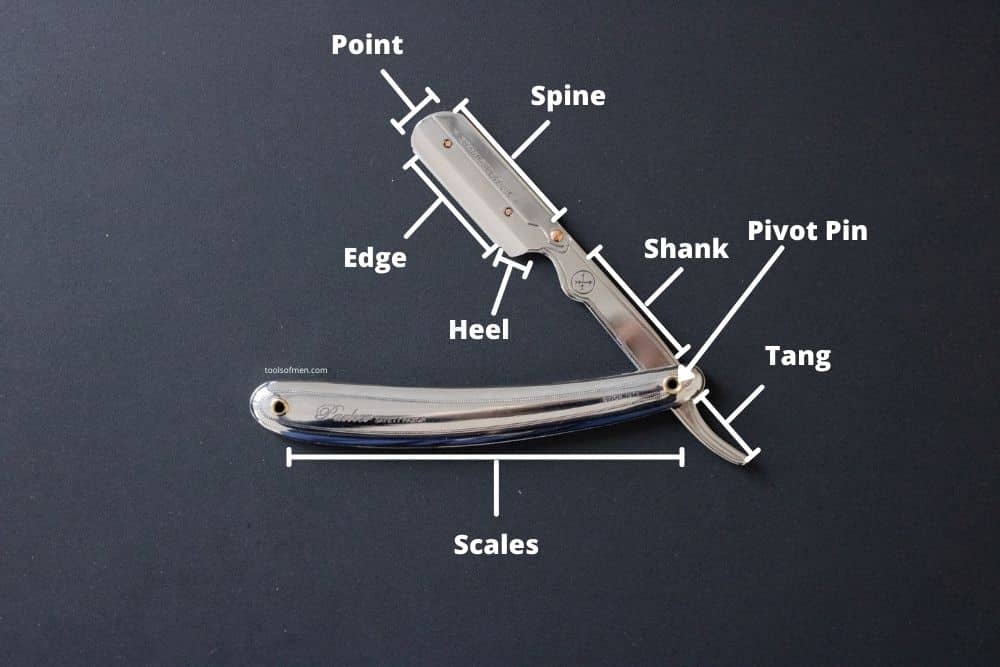
And here’s how it looks when the blade is folded into the scales for storage and/or travel:
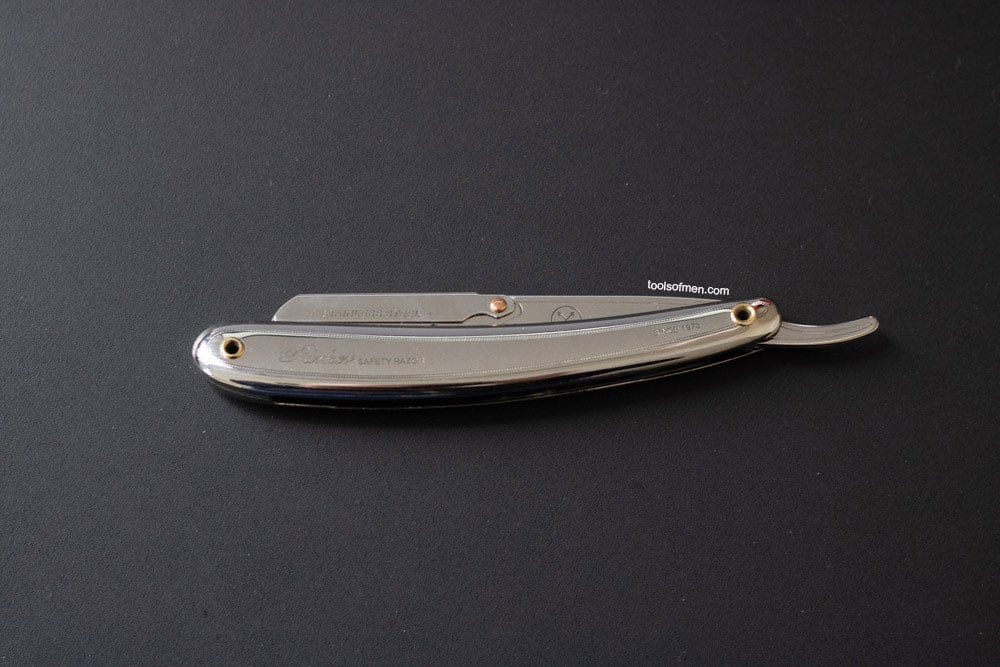
Safety Razor
The safety razor features a T-like design that is similar to modern cartridge razors. Here’s a diagram of the safety razor:
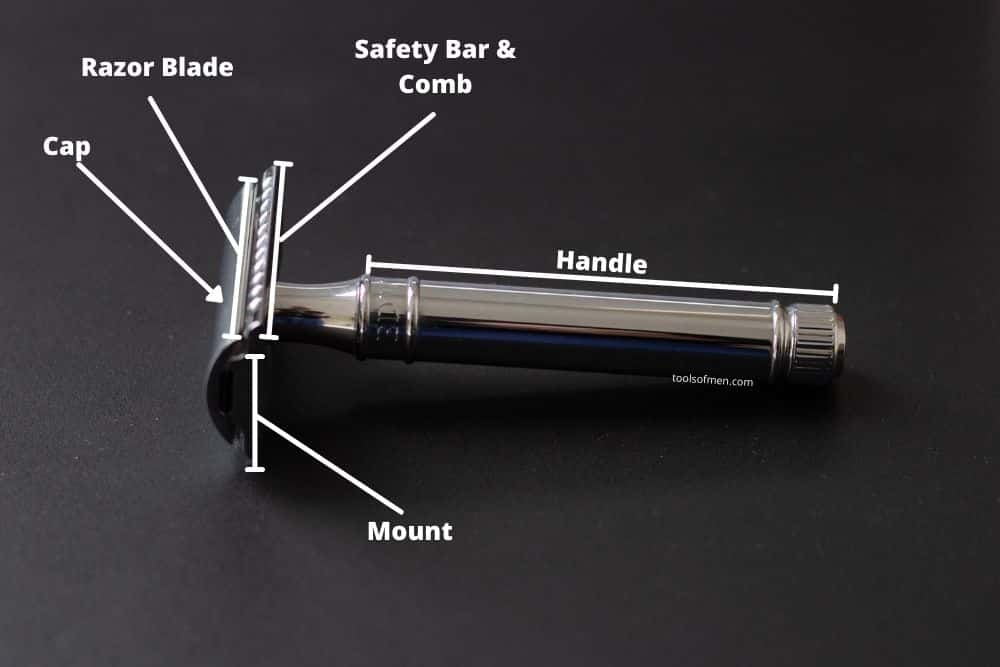
The grip of the handle on the safety razor varies. While the one pictured above features a flat chrome-plated finish, some may feature a knurled etching that allows for a slightly better grip:
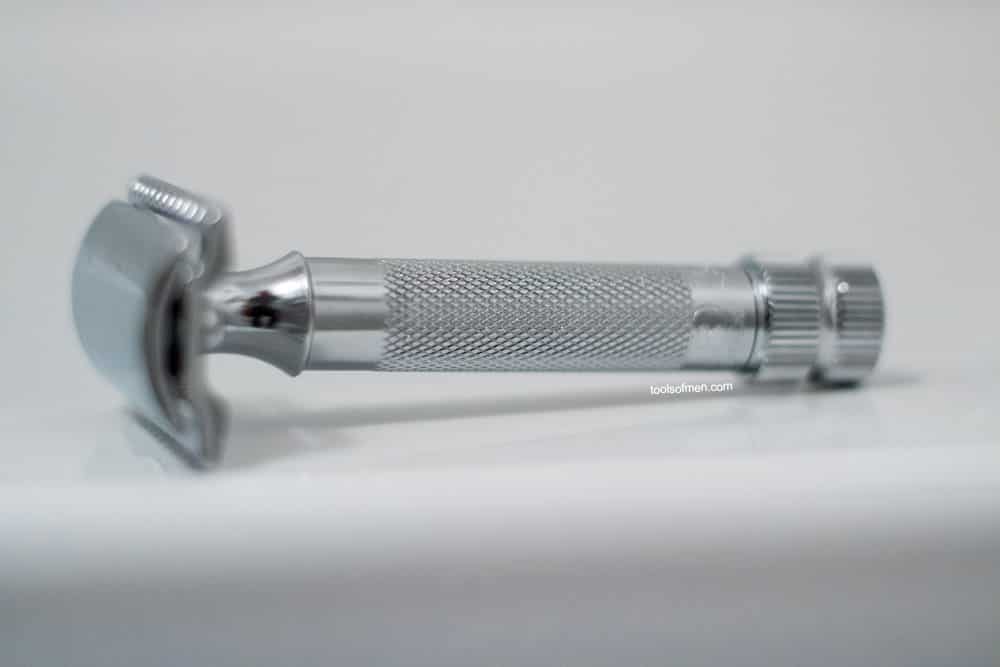
Size
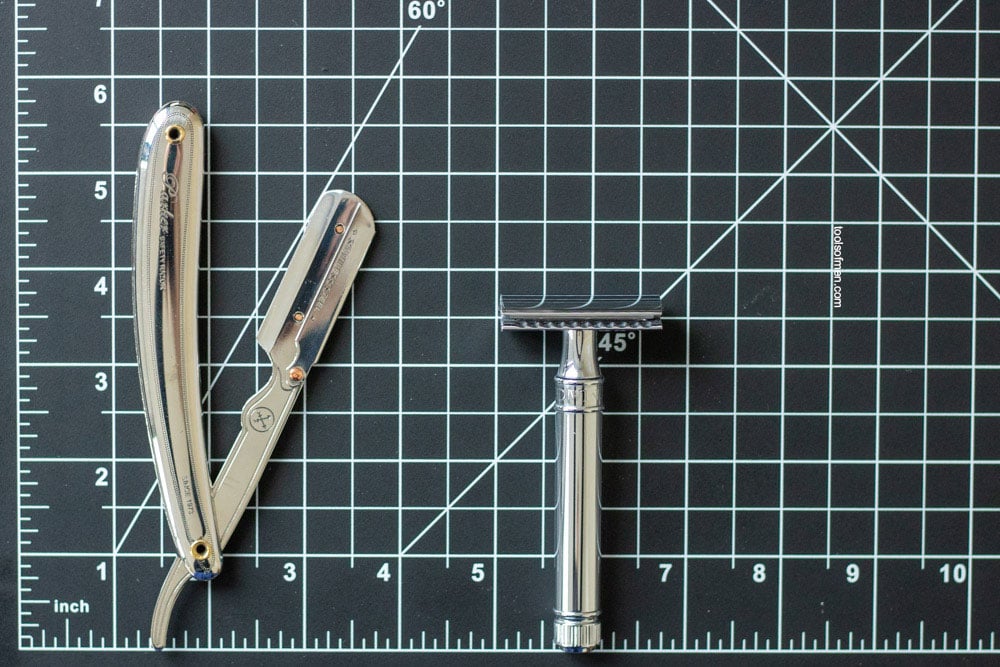
In terms of length, the straight razor features a significantly longer body. At 5.75″, it’s about as long as a modern cartridge razor.
Safety razor lengths vary from one brand to the next. Pictured above is the Edwin Jagger DE89 at 3.75″ long. Other safety razors, such as the Merkur 34C, are 3.25″ in length, whereas the Merkur 38C is 4.00″ in length.
The length of the cutting blade is identical between shavettes and safety razors as they both rely on the same razor blades. Fixed-blade straight razors do have a longer cutting blade length.
Weight
The weight of both safety razors and straight razors will vary depending on the materials used in their construction. However, you can expect each razor type to be within the following ranges:
- Straight Razors: Will often weigh anywhere between 40g (1.41oz) and 90g (3.17oz).*
- Safety Razors: Will often weigh anywhere between 60g (2.1oz) and 110g (3.88oz).
The weight for both razor types can have an impact on the shaving experience.
*Traditional straight razors with a fixed blade tend to have a better balance and a heavier weight. This can make them easier to use when compared to a shavette.
Razor Blade
The cutting blade found on both straight razors and safety razors feature subtle differences. Here’s how:
Straight Razor
The razor blade found on straight razors can either be a solid piece of metal (fixed blade / traditional) or an injectable blade (shavette).
Fixed Blade Straight Razor
A solid metal razor blade that is typically composed of stainless or carbon steel has a distinct grind. The grind of the razor blade can vary which includes full hollow grind, quarter-hollow grind, etc.
When looking at traditional straight razors, you will find they have a number associated with them such as 5/8, 6/8, 7/8, etc. – this is the width of the blade in inches.
Lastly, the blade on a traditional straight razor must be honed and stropped regularly.
Shavette
This type of straight razor relies on an injectable blade that can be swapped out:
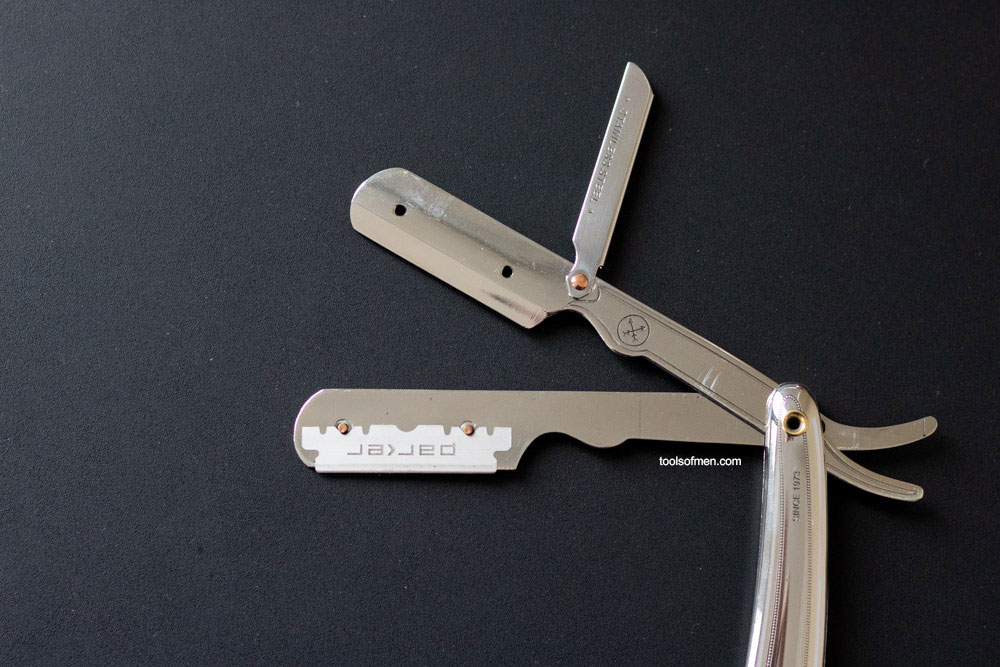
Thanks to the two-pin design, shavettes are compatible with safety razor blades. Simply snap the razor blade in half (while in the paper wrapping):
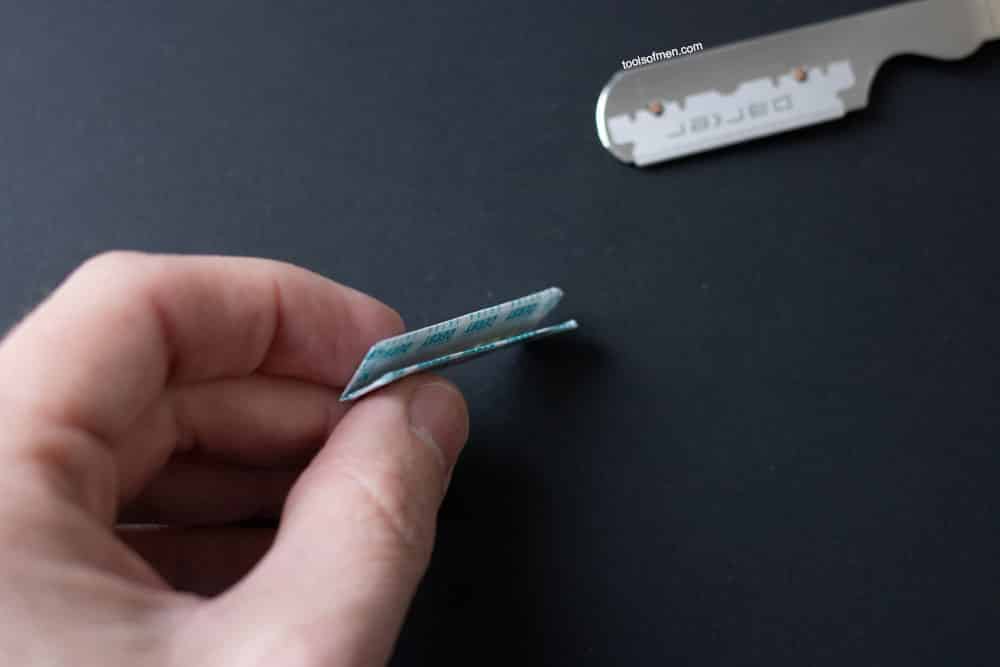
And load it into the shavette.
This allows you to easily test across many different brands to determine which performs best for your skin and facial hair density.
Additionally, shavettes are often used in barbershops for sanitary reasons. Men at home do enjoy the lower costs and reduced maintenance of the shavette as honing and stropping aren’t necessary.
Safety Razor
Like the straight razor, safety razors enjoy a universal fitting that allows you to test various razor blades:
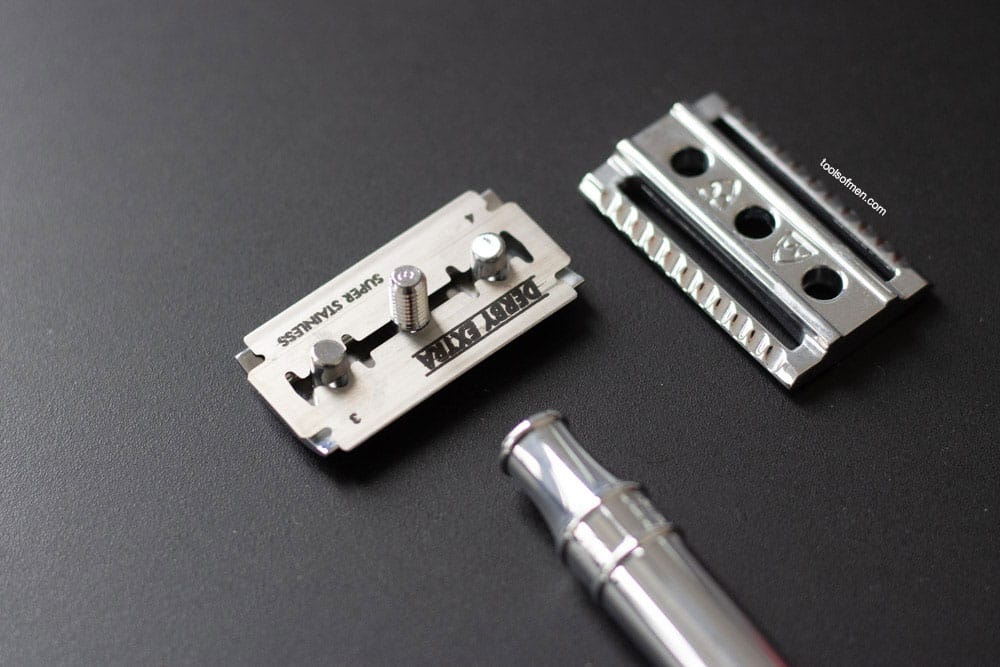
However, unlike the straight razor that features only a single cutting edge, the safety razor has two cutting edges (hence the name double edge safety razor):
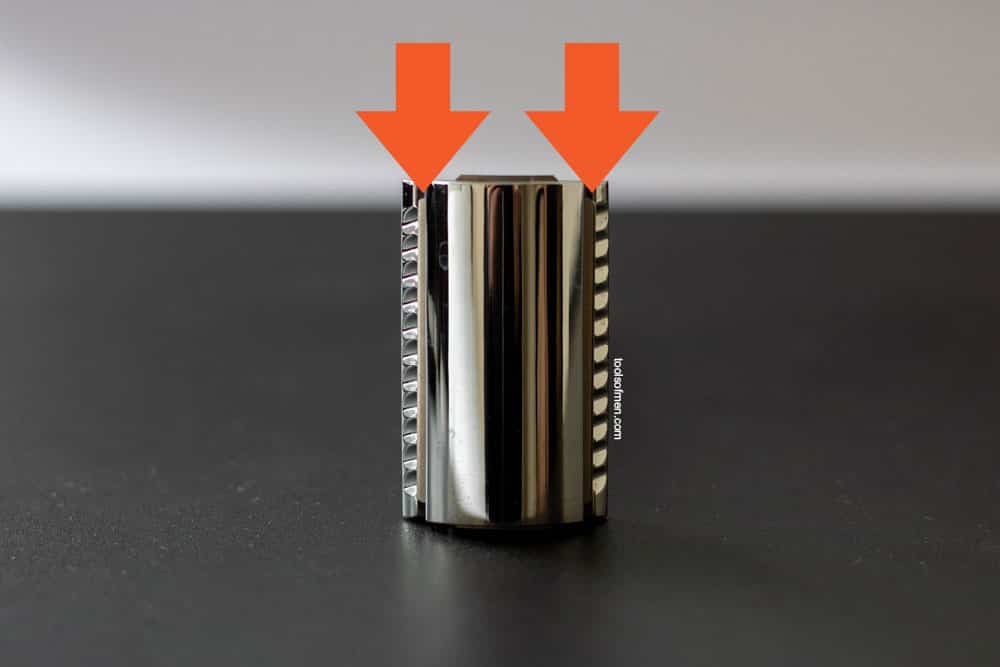
This double edge design improves efficiency when shaving.
Intent
Both the straight razor and safety razor are intended to be used on facial hair only. While some talented individuals may use these razors for other surfaces, such as the scalp, chest, groin, legs*, etc., this goes beyond the scope of this guide and isn’t recommended.
*Some women do find the safety razor advantageous for leg shaving. As a result, we are starting to see more feminine-focused safety razors being introduced into the marketplace.
Holding
Both the straight razor and safety razor are held in completely different manners. Here’s a demonstration of both:
Straight Razor
The straight razor can be held in a variety of ways which include the following:
Two-Finger or Three-Finger Grip
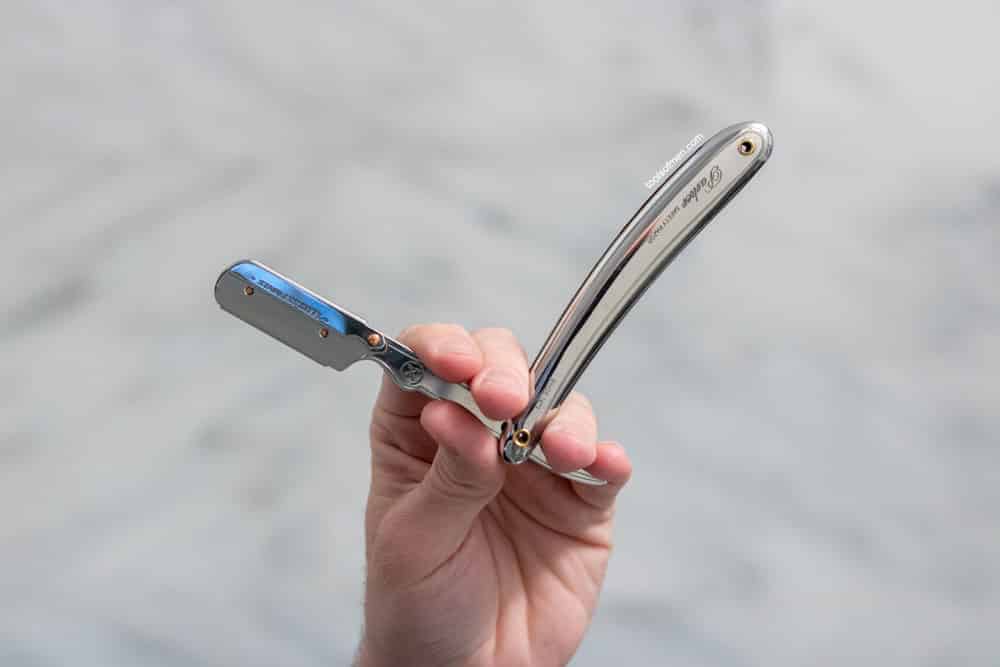
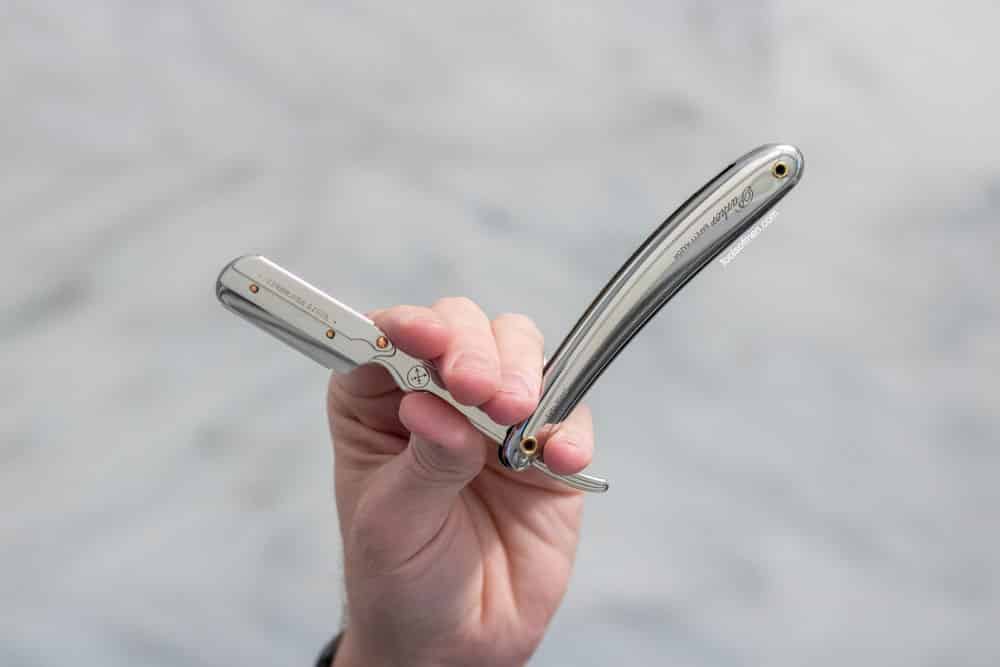
Pinch Grip
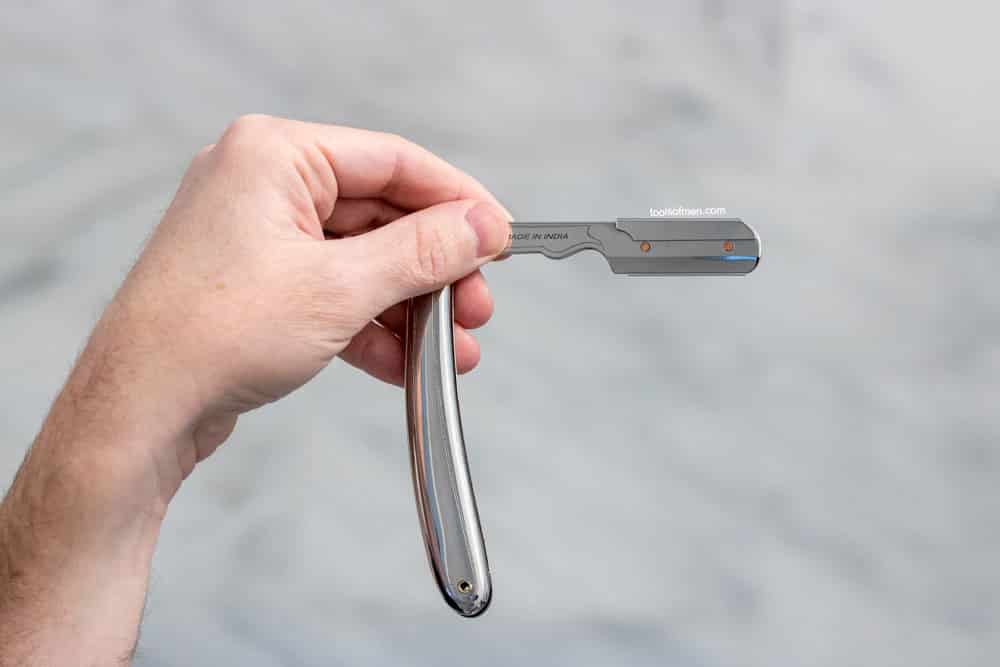
When shaving with the straight razor, you will want to use the same hand to shave the same side of the face – so the right hand is used to shave the right side of the face, and the left hand for the left side of the face. This can be difficult to master.
Safety Razor
Given that the safety razor has a modern design, holding and using it is similar to a cartridge razor.
The safety razor can be held further down the handle when making long passes:
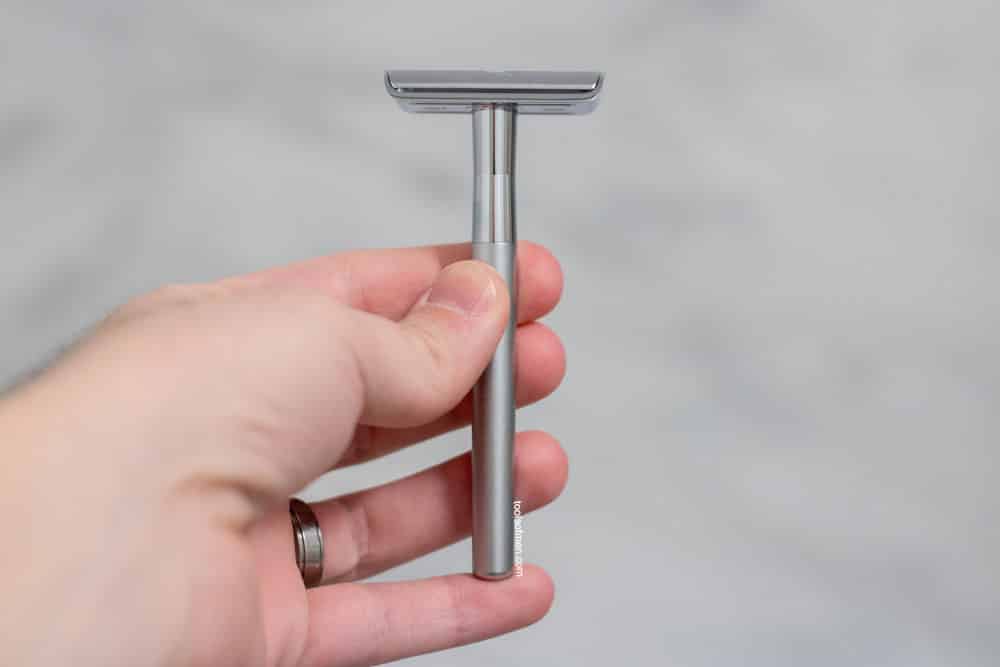
Or closer to the neck when working in detailed areas such as the mustache or chin:
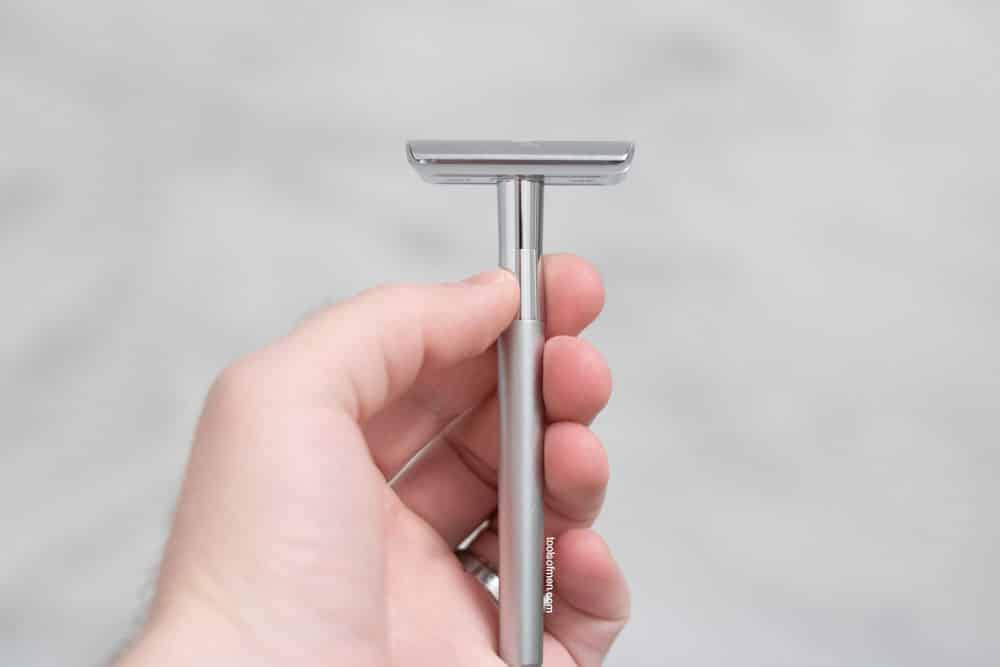
Pictured above is the Bevel Safety Razor.
Ultimately, there is some flexibility when holding the razor, making it a bit more beginner-friendly.
Learning Curve
The biggest barrier that deters a lot of men from using either one of these razors is the learning curve. Not only is the learning curve steep, especially for the straight razor, but so, too, is the susceptibility to razor cuts.
Here’s a rough estimate of how long it will take to learn both of these razor systems to get acceptable results for the entire face and neck:
- Straight Razor: Approximately 1 to 2 months.
- Safety Razor: Approximately 2 weeks.
No matter which razor you use, you always want to take your time and apply very little pressure when shaving. Safety razors provide plenty of weight in the handle and a familiar design that makes them easier to learn.
Straight razors require not only a steady hand but also that the blade is consistently held at the optimal cutting angle with each pass – making it difficult, although not impossible, to master.
Regardless of the timeline, regular practice is key for learning either razor system effectively.
Time Requirement
The time required for each shave largely depends on a variety of factors, the most notable being experience and result preference.
- Straight Razor Shave Time (Experienced): Expect to get good results in about 15 minutes.
- Safety Razor Shave Time (Experienced): Expect to get good results in about 5 minutes.
However, time efficiency is only telling half the story. Many men like safety and straight razors due to their old-time heritage. It may be more about the experience rather than the shave itself. Therefore, many may extend the shave for several more minutes simply because it’s enjoyable.
Should you like to make passes across and against the grain for silky-smooth results, additional time will be required.
Shaving Safety
What made the safety razor so revolutionary when it was originally introduced was the inclusion of a safety bar.
As demonstrated in the image below, the safety bar extends the width of the razor blade:
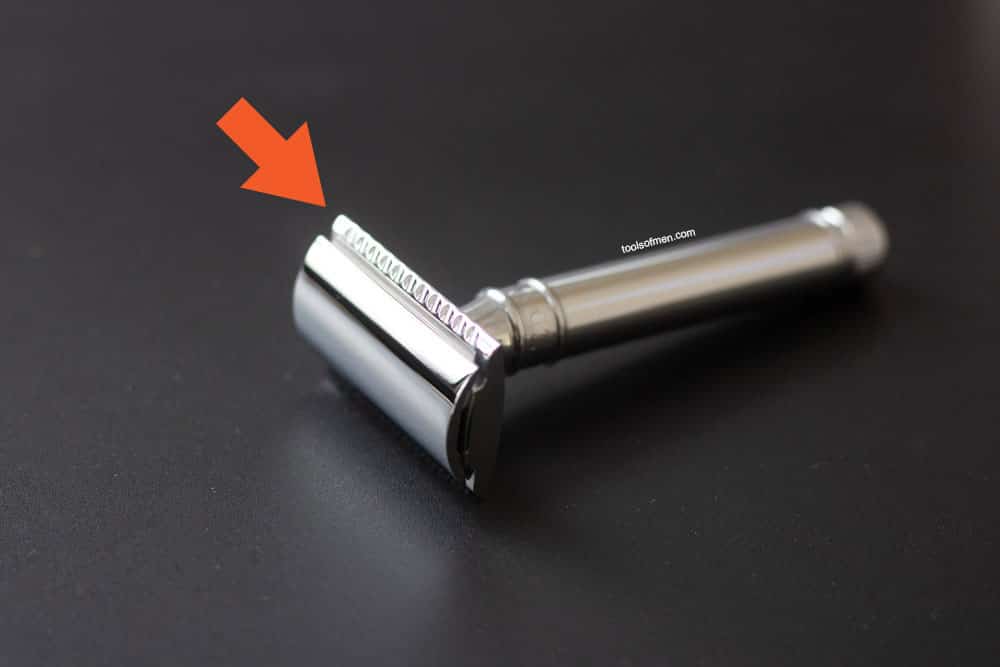
Here’s how it looks when slightly pressed upon the skin:
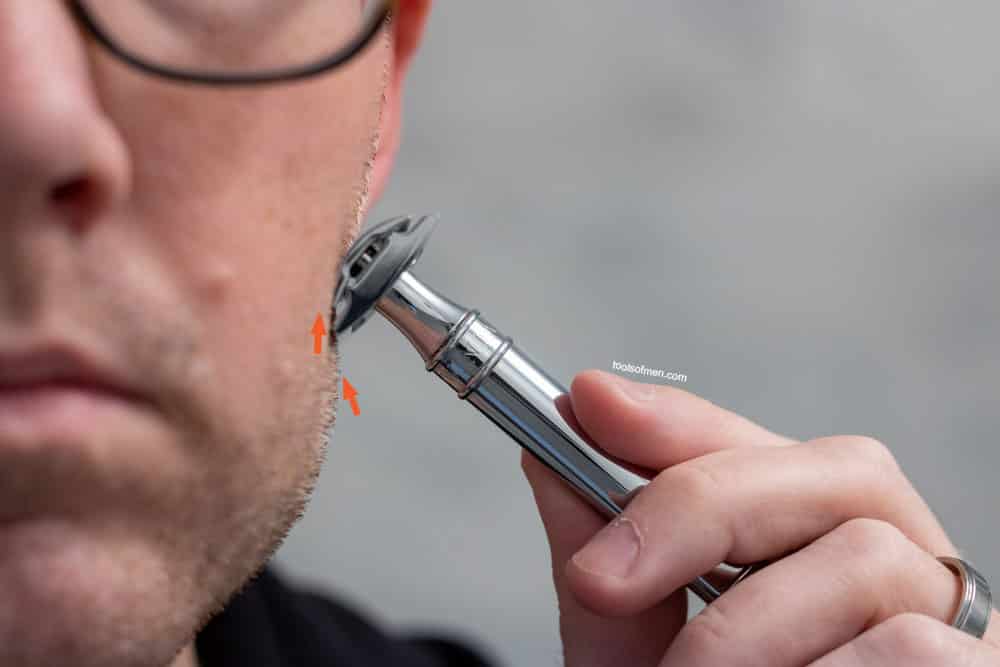
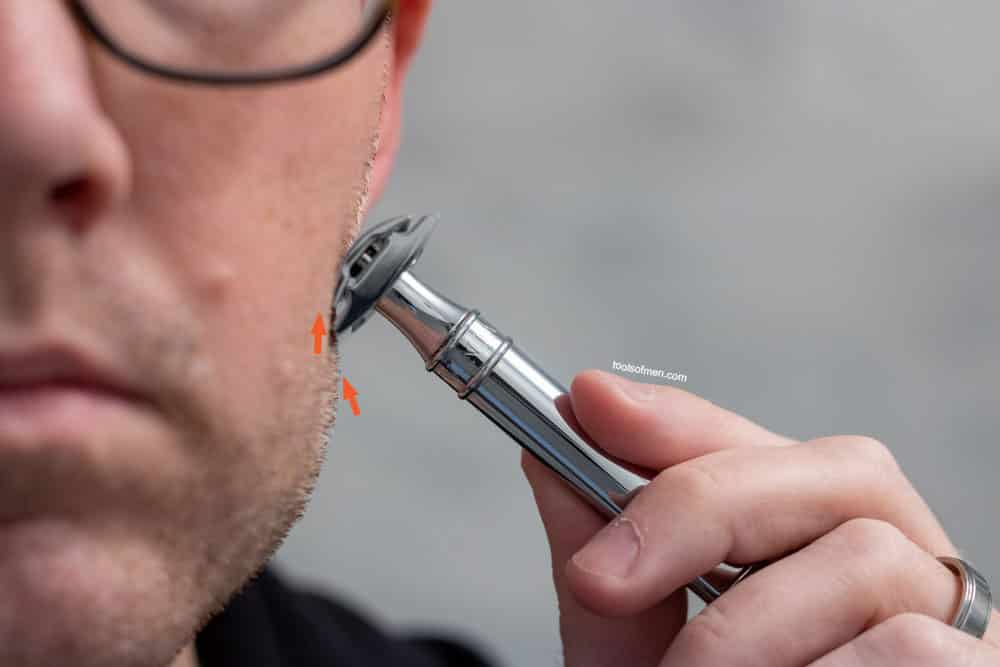
As you can see, the safety bar helps to flatten out the skin before it is shaved. This small bar greatly improved the safety (hence the name) and made it much easier to use.
The straight razor has no such mechanism and requires you to have a steady hand coupled with the proper cutting angle to remove facial hair.
Cutting Angle
Both the safety razor and straight razor should be held at an optimal cutting angle of approximately 30 degrees when shaving.
As demonstrated in the images below, you want to avoid having the angle too closed or open.
Straight Razor
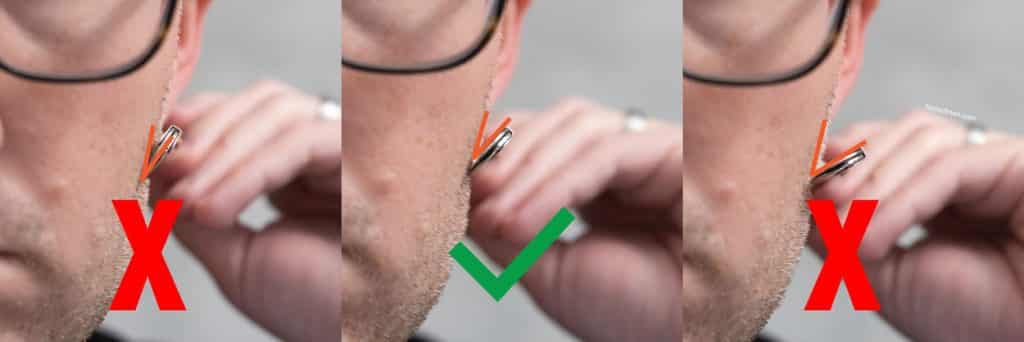
Safety Razor
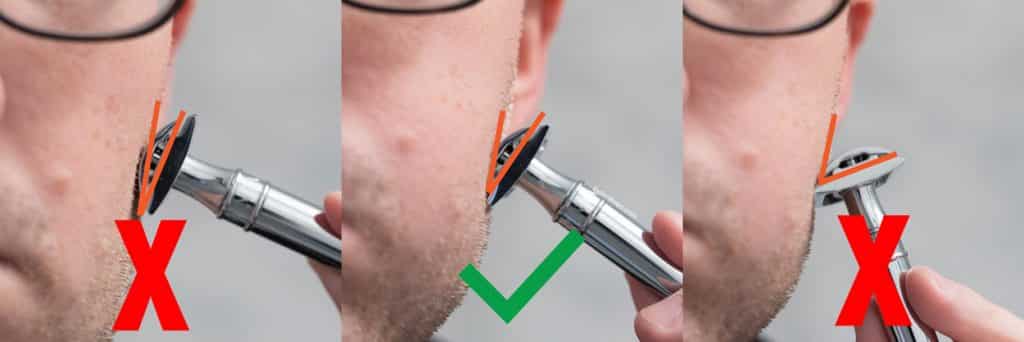
Not adhering to the optimal angle will result in surface cuts, irritation, or simply not enough hair being removed.
Clogging
Safety razors and straight razors are significantly less susceptible to clogging when compared to a multi-blade cartridge razor.
However, when comparing the safety and straight razor to each other, the straight razor has the advantage as it cannot clog at all due to the single cutting edge.
Regardless, both razors should be rinsed after each pass for sanitary reasons and optimal blade performance.
Long Term Costs
Costs for both the straight razor and safety razor must be separated into the following categories to understand their differences:
- Handle Cost
- Blade Replacement
- Maintenance
Handle Cost
Here are a few popular razors* and their respective price points:
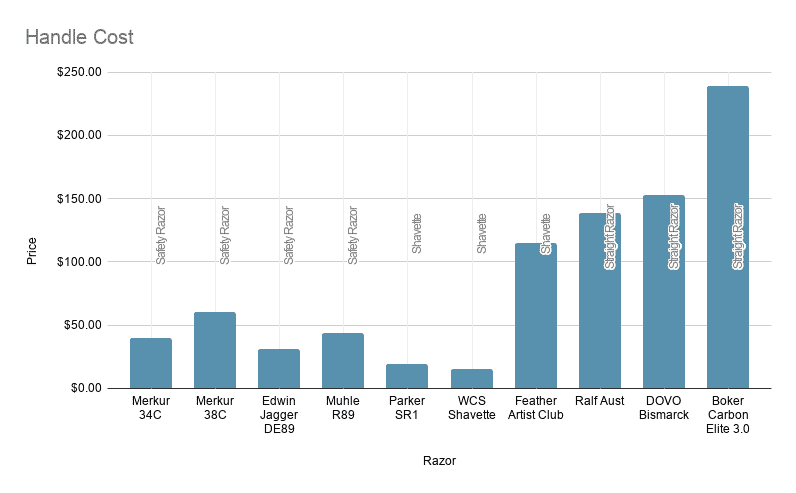
| Type | Razor | Price |
|---|---|---|
| Safety Razor | Merkur 34C | $40.00 |
| Safety Razor | Merkur 38C | $60.00 |
| Safety Razor | Edwin Jagger DE89 | $31.00 |
| Safety Razor | Muhle R89 | $44.00 |
| Shavette | Parker SR1 | $19.50 |
| Shavette | WCS Shavette | $15.00 |
| Shavette | Feather Artist Club | $115.00 |
| Straight Razor | Ralf Aust | $139.00 |
| Straight Razor | DOVO Bismarck | $153.00 |
| Straight Razor | Boker Carbon Elite 3.0 | $239.00 |
As the data suggests, straight razors require a large investment and one that should only be considered by those that are committed to both learning and trying this razor type. If you are curious about straight razor shaving, perhaps try a shavette that can provide a similar shave experience to its fixed blade counterpart.**
Lastly, most safety razors can be purchased for under $75.
*Excluded from our small sample is import razors that are generally considered to be inferior. This includes many off-brands from Pakistan or China.
**While cheaper, shavettes can be difficult to adjust due to their lighter weight and lack of balance. Proceed with caution here.
Blade Replacement
No matter the shaving tool, blades must be either replaced or maintained regularly.
Safety Razors & Shavettes
For safety razors and shavettes, this is as simple as swapping out the blade once it begins to dull. When looking at the cost on an annual basis, you can expect to pay the following:
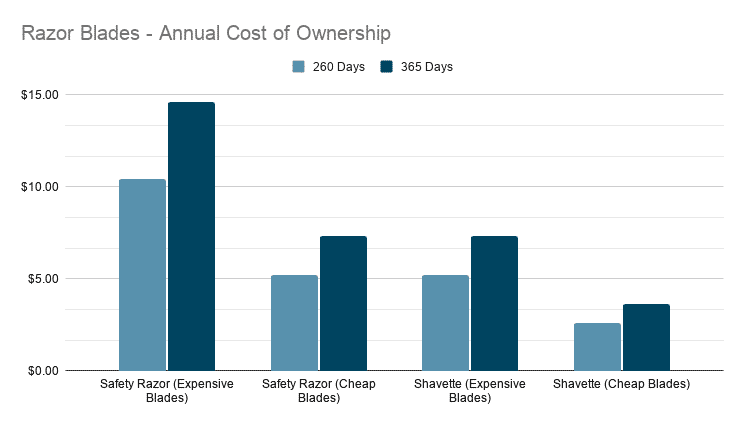
| Days | Safety Razor (Expensive Blades) | Safety Razor (Cheap Blades) | Shavette (Expensive Blades) | Shavette (Cheap Blades) |
|---|---|---|---|---|
| 260 Days | $10.40 | $5.20 | $5.20 | $2.60 |
| 365 Days | $14.60 | $7.30 | $7.30 | $3.65 |
- 260 Days: This assumes daily shaving M-F only (excluding holidays).
- 365 Days: This assumes shaving every day of the year.
- Cheap Blades: Derby Extra razor blades – priced at $0.10 per blade.
- Expensive Blades: Feather razor blades – priced at $0.20 per blade.
While the above chart looks dramatic when comparing safety razors and shavettes, the total cost of $15 per year for expensive razor blades is rather low.
Additionally, shavettes enjoy a nice cost advantage as the razor blade can be snapped in two (discussed previously) which increases value.
Straight Razors
For traditional straight razors that rely on a fixed metal blade – no blade replacement costs are necessary.
Maintenance
For long-term maintenance, safety razors and shavettes have no additional costs.
Straight razors, however, do require regular maintenance which includes the following:
Stropping
This is intended to maintain the polish and alignment of the cutting edge. You should strop the blade before each shave. A leather strop costs approximately $50. This is a one-time purchase and is necessary.
Honing
Honing, or sharpening the razor blade must be done once every few months (approximately 75 shaves). There are two options available to you: do-it-yourself or have the razor professionally honed.
Shave companies, such as Maggard Razors, charges the following prices for honing straight razors:

Per their honing service page, Maggard’s uses a variety of whetstones to hone the razor blade.
Purchasing a whetstone and honing yourself is costly – however, it’s worth considering given the long-term savings you’ll experience. A single whetstone will cost approximately $75 to $125. Several guides and videos are available online which demonstrate how to sharpen a straight razor if you want to learn more.
Total Long Term Costs (Year 1 & Year 2)
After covering all nuances of costs above, admittedly, it is a bit confusing to see where each razor ranks in both cost and value. Here’s how much you should expect to spend on the following systems for Year 1 and Year 2:
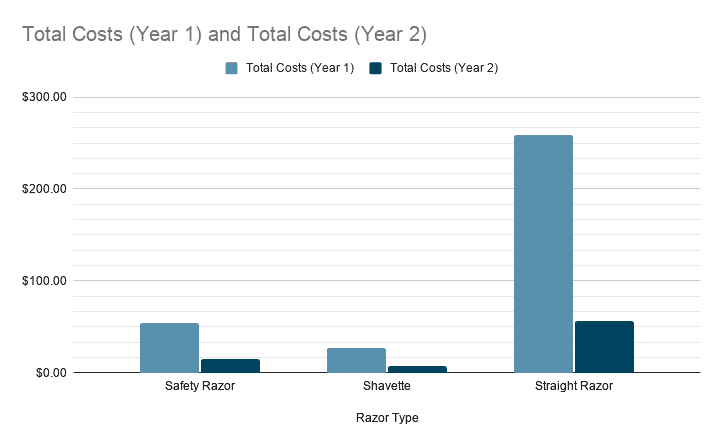
- Year 1 (365 shaves): This includes the razor handle cost, blade replacement, and maintenance.
- Year 2 (365 shaves): This includes blade replacement and maintenance.
Here’s the supporting data:
| Type | Razor | Handle Cost | Blades | Strop | Honing* | Total Costs (Year 1) | Total Costs (Year 2) |
|---|---|---|---|---|---|---|---|
| Safety Razor | Merkur 34C | $40.00 | $14.60 | $0.00 | $0.00 | $54.60 | $14.60 |
| Shavette | Parker SR1 | $19.50 | $7.30 | $0.00 | $0.00 | $26.80 | $7.30 |
| Straight Razor | DOVO Bismarck | $153.00 | $0.00 | $50.00 | $56.00 | $259.00 | $56.00 |
*While technically the straight razor would need to be honed four times a year (75 shaves per honing), we assume this is unrealistic and reduced it down to two times per year.
Here’s the same data, but broken down for each expense:
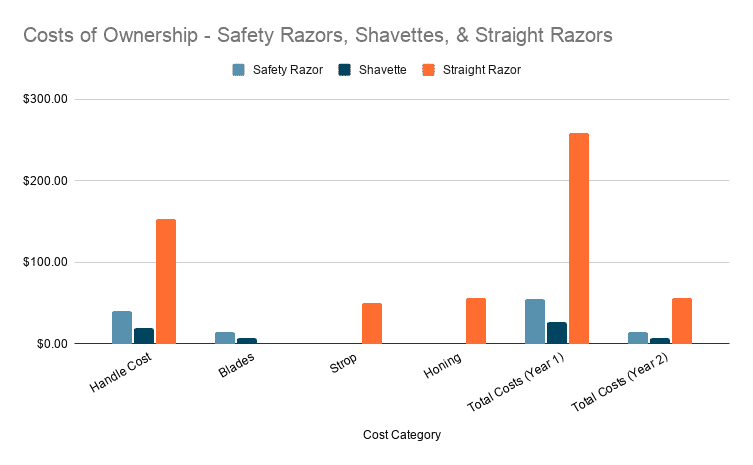
Notably absent from all these costs graphs are ancillary shaving products such as shaving cream, shaving brush, pre-shave treatment, and more.
Overall, while the straight razor is considered a cheap shaving tool – the costs do start to add up. Safety razors and shavettes are a more budget-friendly alternative.
TSA-Compliance / Air Travel
Here are a few important notes about traveling with straight razors and safety razors:
- Straight Razors: Fixed blade straight razors must be stored in checked luggage.
- Shavettes: The handle can be stored in carry-on luggage, but blades must be checked.
- Safety Razor: The handle can be stored in carry-on luggage, but blades must be checked.
As for other traveling or going to the gym, both are small enough to be easily stored in a Dopp kit.
A Final Note
We hope that this article helped provide all the key differences between straight razors and safety razors.
Of course, if you are interested in adding any one of these tools to your grooming regimen, be sure to read our related shaving guides on the site for guidance.